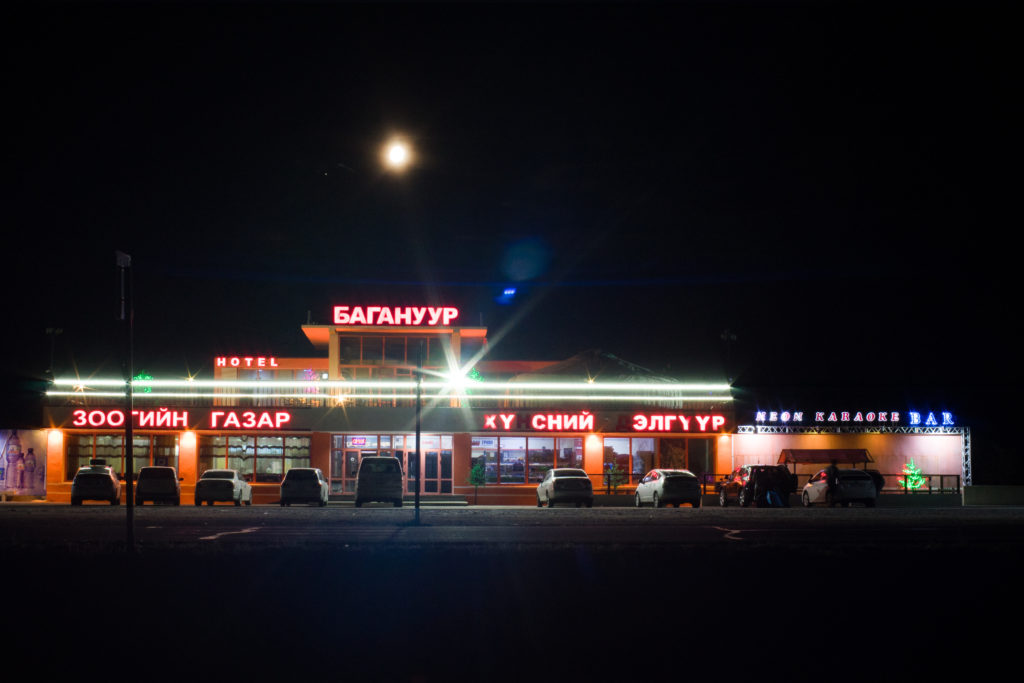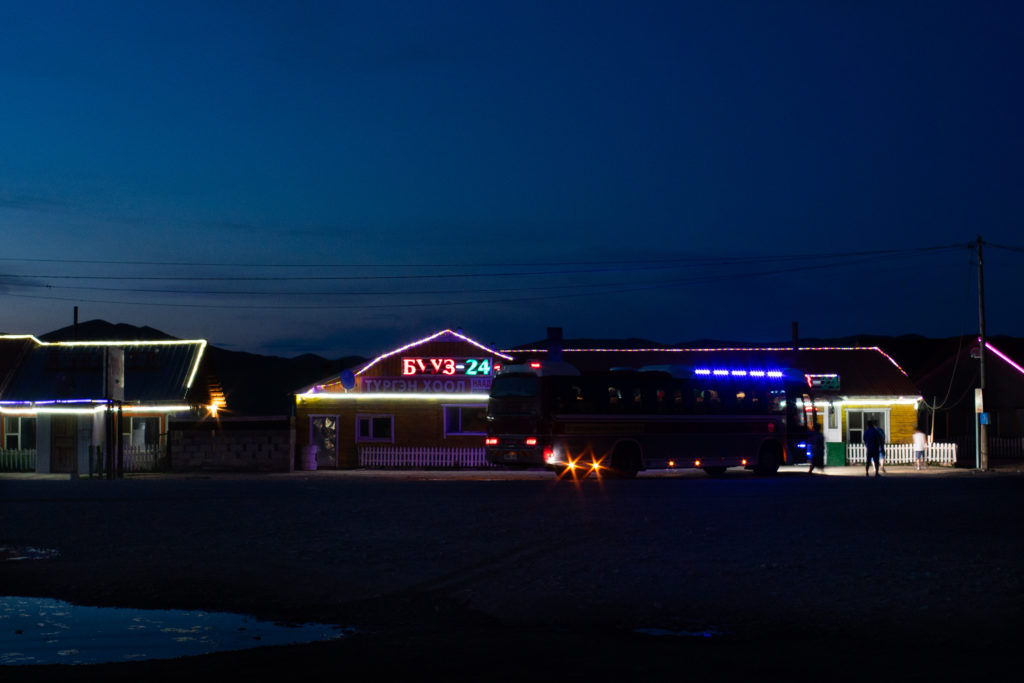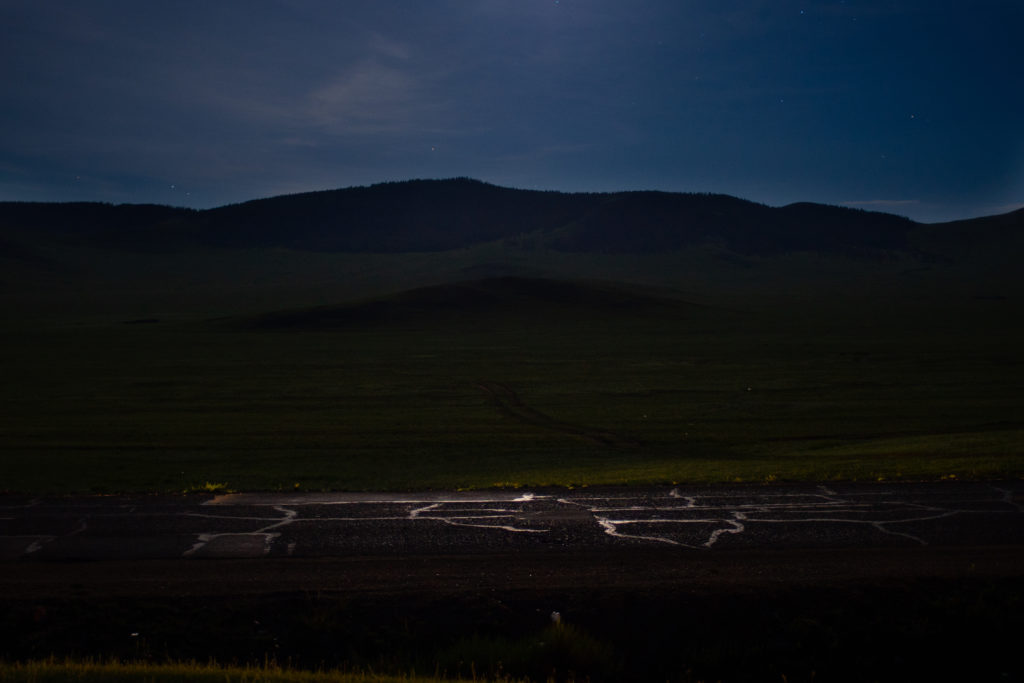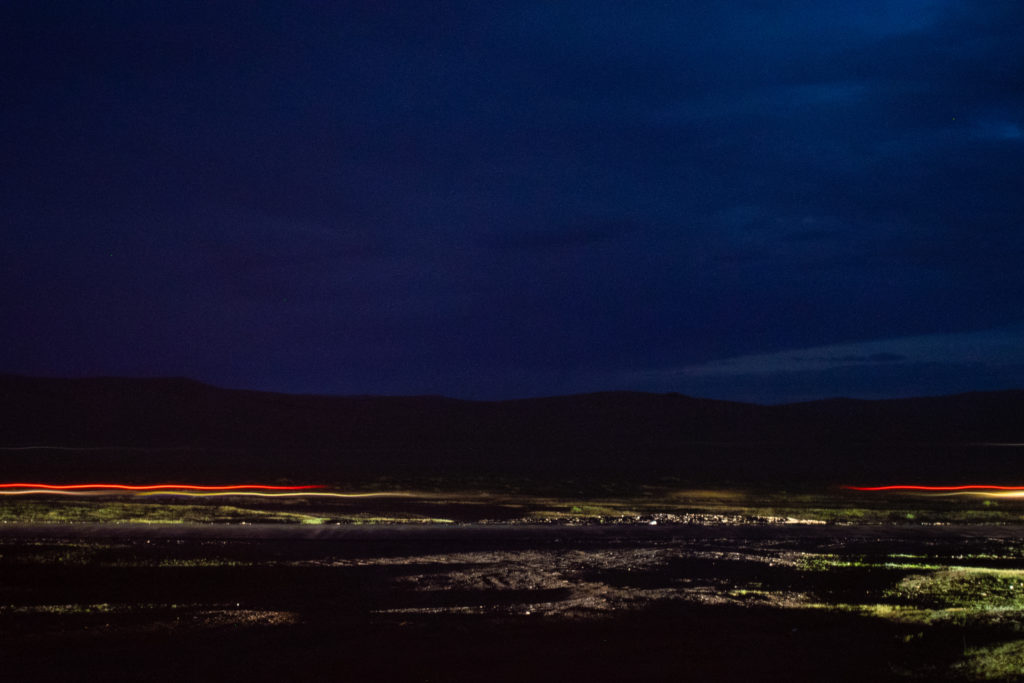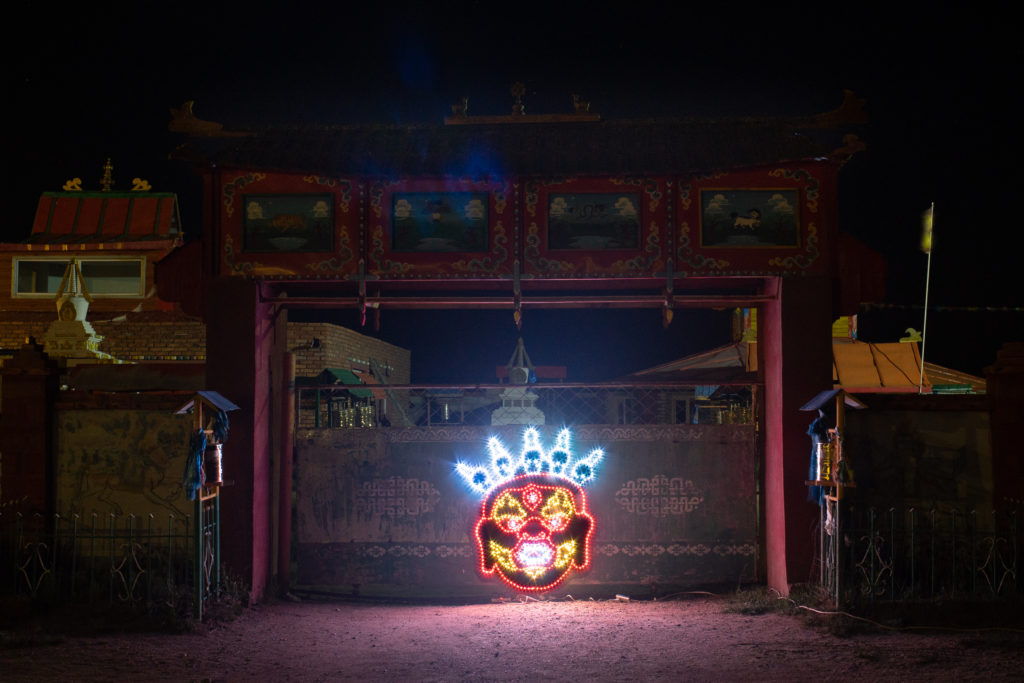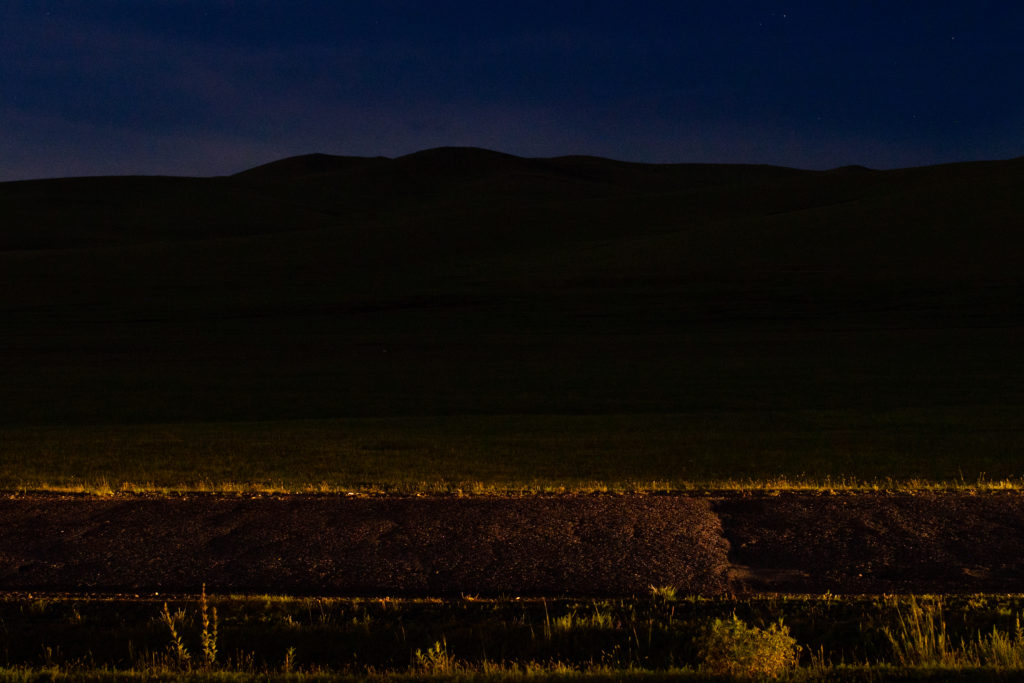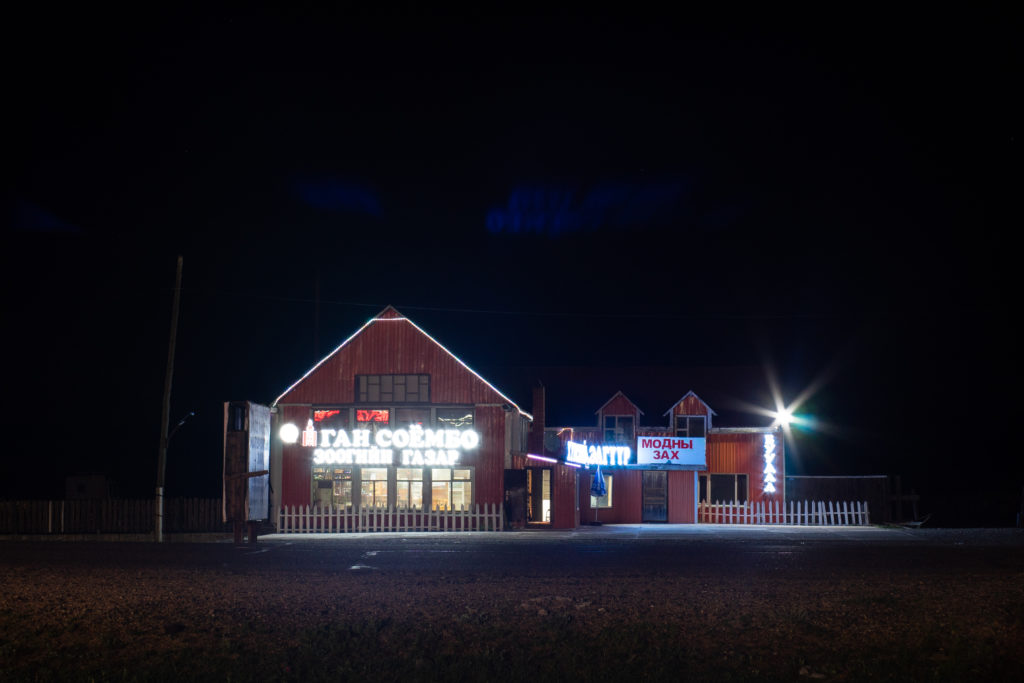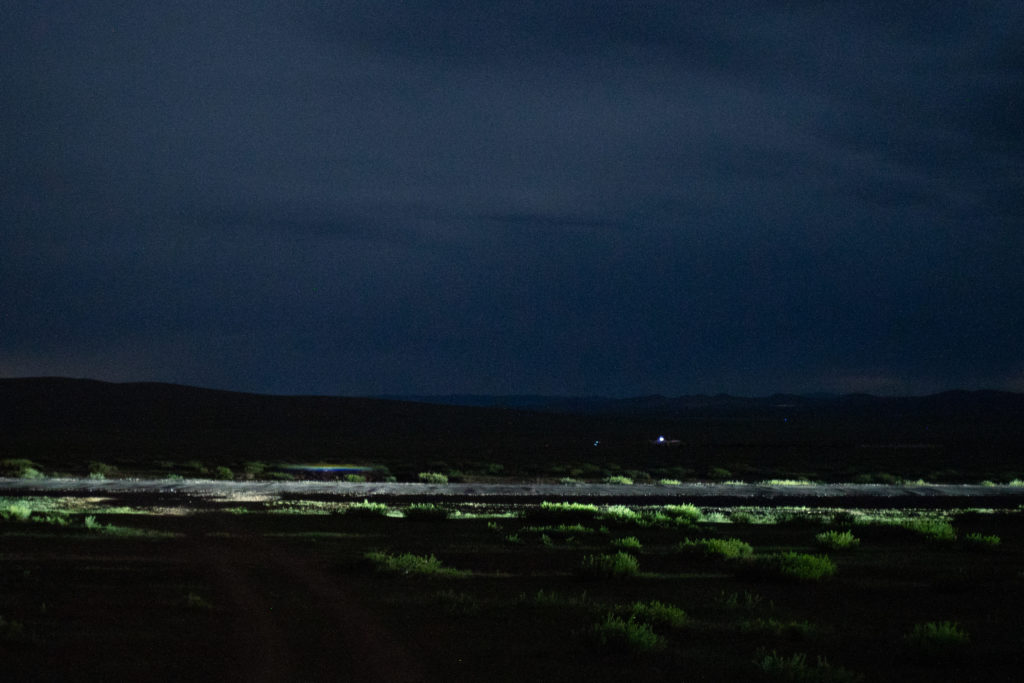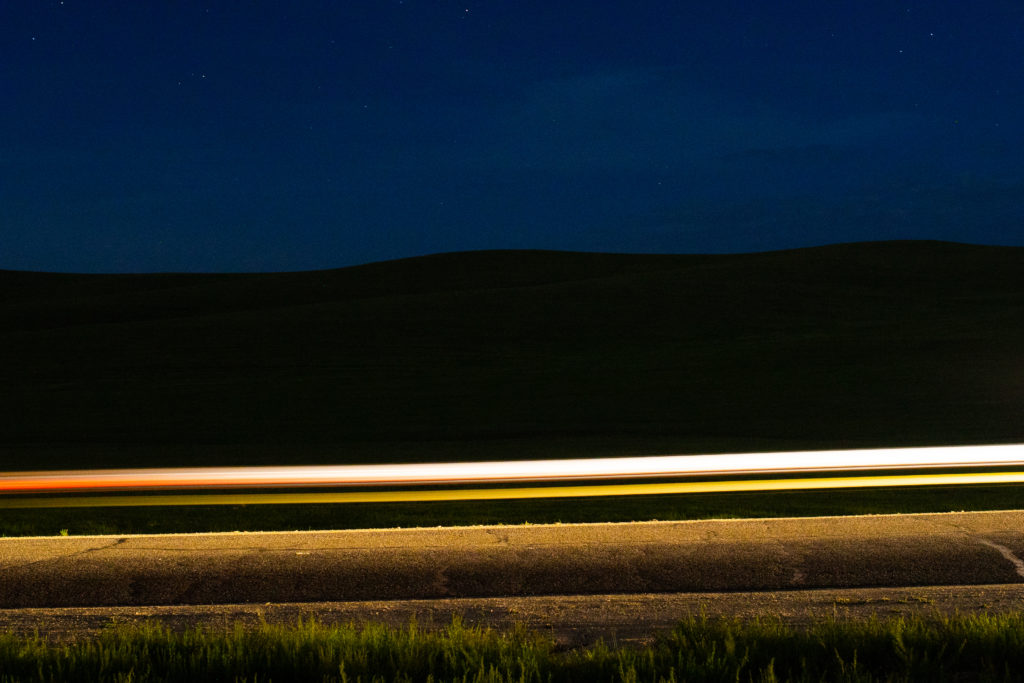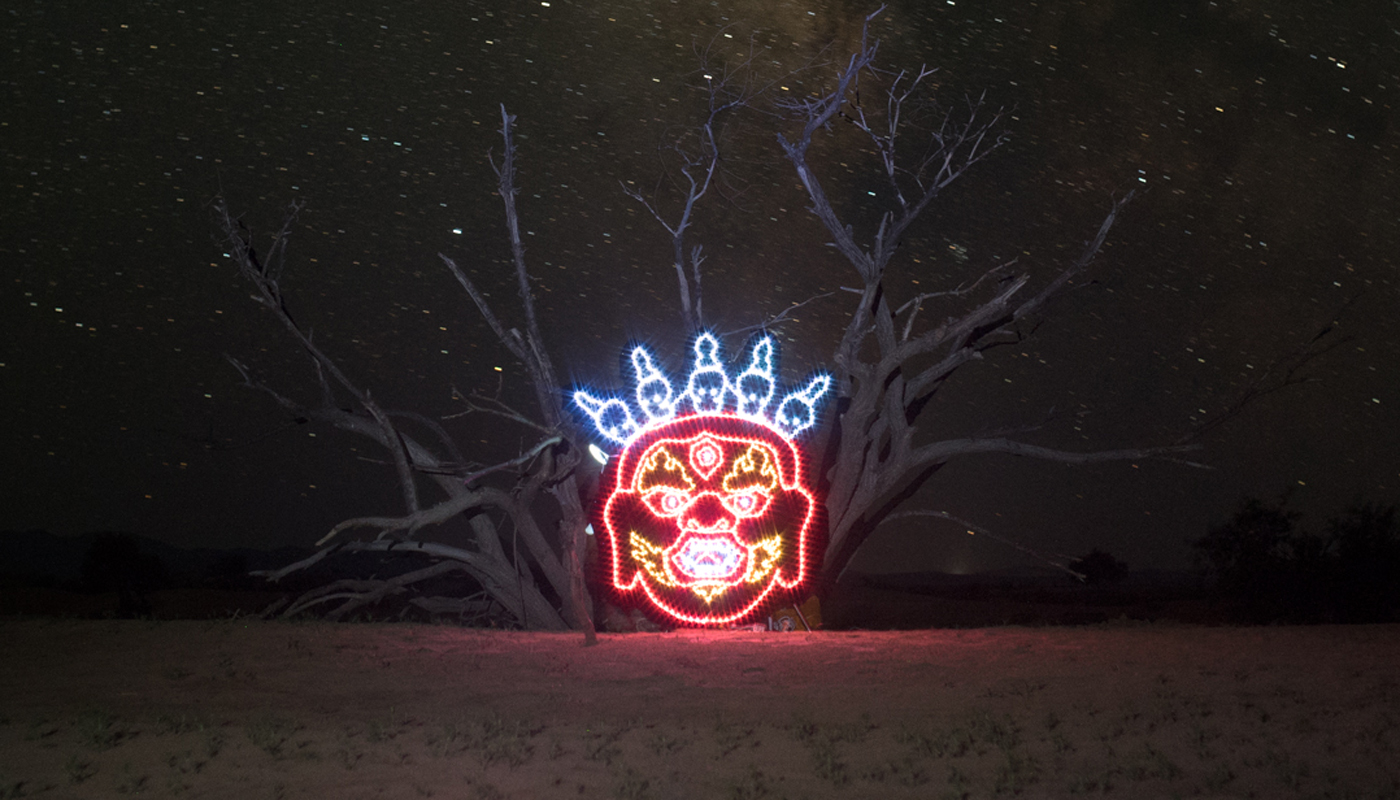
New Dominion Bookshop is pleased to spotlight the photography of Clement Gelly for the month of July. In lieu of a traditional show in our Mezzanine Gallery, we are happy to share Clement Gelly’s work online here.
Salvation, Monoglian Highway by Clement Gelly with O. Myagmadorj, N. Bayartugs
For a 3D gallery, the full text of Clement Gelly’s artist statement, and to purchase art, please visit Clement Gelly’s website here. All profits will be split between the Cville Immigrant Freedom Fund and mutual aid funds in the U.S. and London that are requesting funds at the time when the exhibition closes.
Artist Statement
These photos are an attempt to imagine a different future, though one very similar to the present: one in which Mongolian Buddhist monasteries signify themselves with LED signs.
In order to create this future, I designed and constructed a 5-foot-by-5-foot LED sign representing the face of the Buddhist deity Begtse. Begtse predates Mongolian Buddhism as a war god of the Mongol Empire, and was only later absorbed into Buddhist mythology. Perhaps for his eminently Mongolian stature amongst the Buddhist pantheon, Begtse’s face is widely used in Mongolia today by street fashion brands, in company logos, and even in Pepsi ads; I chose his image in part to follow these trajectories in youth culture in Mongolia today.
The sculpture was constructed in such a way that it could be broken down and packed in a small cardboard box, so as to meet the constraints of Aeroflot’s checked bag regulations. I flew with the sculpture to Mongolia, reconstructed it, and, in collaboration with Mongolian artists O. Myagmadorj and N. Bayartugs, photographed the LED god in front of Buddhist monasteries and along stretches of the highway.
The highway, rolling through vast darkness for hundreds of miles at a time, is punctuated intermittently with small roadside towns lit up with bright LED lights. The blazing signs advertise food, rest, karaoke—signs that provide some salvation from the dark.
Much of this project is about identifying and speculating on this merging of modern technology with religion in Mongolia. Properly speaking, and considering the wiring of modernism, this is a merging of religions—a religious syncretism. The glowing Buddhist icon is in part an allusion to the neon crosses and crucifixes one might find along the American highway. In Mongolia, too, we find the steady march of cruciform utility poles across the countryside, bringing light and “enlightenment.” What is so compelling here is that, rather than the typical domination of modernity over—if I might briefly borrow from Heidegger—“all that is mysterious,” we find these Mongolian spirits animating electricity, warping and imploding the strict coherence of the electrified world.
I thus offer several readings of the title of this work, “Salvation, Mongolian Highway.” The first is how it draws a rough analogy between the cross for Christianity and the face of Begtse for Mongolian Buddhism. The analogy is a false one, as no religion has any symbol equivalent to the cross for Christianity—both in its ubiquity and its abstraction. The cross symbolizes salvation and Begtse does not; my intention is not to deceive the rest of the world about what Begste is and what Mongolian Buddhism is, but rather to point up this uncanny fusion of religions in Mongolia today.
The second is about the experience of neon rest stops along the highway at night. For those of us who have driven at night through Arizona or Texas, Ohio or Virginia, we know the startling calm of pulling off the road into the gaudy lights of a tiny town. The warm night air, the buzz of the lights and the flicker of insects in their aura; a pristine calm. Like an oasis, like a kind of salvation from the darkness and monotony of the road. On the Mongolian highway, this contrast is even more stark. The potted and treacherous roads are unlit except by headlights and the night sky, and you can drive for hours without seeing artificial light. The flashing LED lights of these tiny rest-stop towns—sometimes no more than fifteen houses and yurts—are a respite not just from the anxieties of bursting a tire, but from the sheer emptiness of the steppe.
Finally, the project presents the fusion of religion and electricity in Mongolia as salvation from the coherence of Enframed reality. I am putting a kind of faith and hope in the possibilities that it opens up—in the disorder it sews in gridded reality.
Salvation, Mongolian Highway


